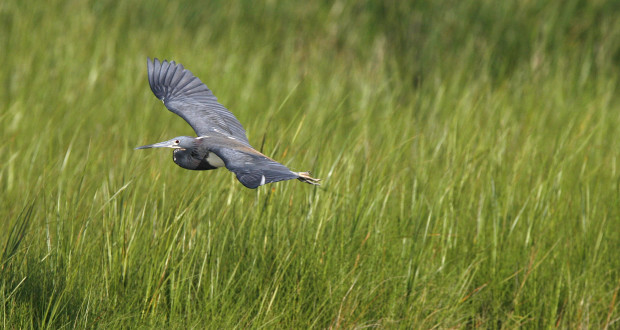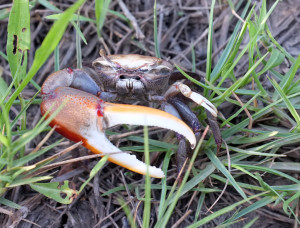Just past the gate, the landscape is prairie, with grass, as the saying goes, as high as an elephant’s eye. Rabbits dart across the trail here, especially in the morning and near dusk. After turning the corner, the Cattlewalk stretches straight out into the marsh. Bayous and ponds alternate on either side. If there’s any wind, the sound of it rustling through the cordgrass is loud enough to drown out any sounds from the road. Look down and you’ll probably see fidler crabs, with their one long claw, scurring about – or at least the remnants of them left by birds.
The 8,900 acres of Texas Point are an important feeding and resting habitat for migrating waterfowl. In winter, thousands of ducks and geese descend on the refuge and its larger sister, McFaddin, up the road. In the spring, warblers, vireos and tanagers are among the nearly 280 bird species on the two refuges.
The U.S. Fish and Wildlife Service describes some of the mammals found on the refuge, including:
… muskrat, river otter, raccoon, striped skunk, bobcat, gray fox and coyote. Some particularly large, darkly colored coyotes are most likely descendants of hybrid crosses with red wolves. Although the red wolf once roamed the coastal marshes, they are no longer found in Southeast Texas. In general, most mammals are nocturnal and are not commonly seen by refuge visitors during the day.
Even if you don’t encounter them face-to-face, their presence is apparent in the diverse tracks you’ll see pressed into the mud along the trail.
The Cattlewalk is one of three paths that come off the refuge parking lot. Just to the right, is a short, grassy birding trail where you may see neotropical migrants. To the left, a sidewalk circles the brush behind an information kiosk.
REFUGE GALLERY











You must be logged in to post a comment.